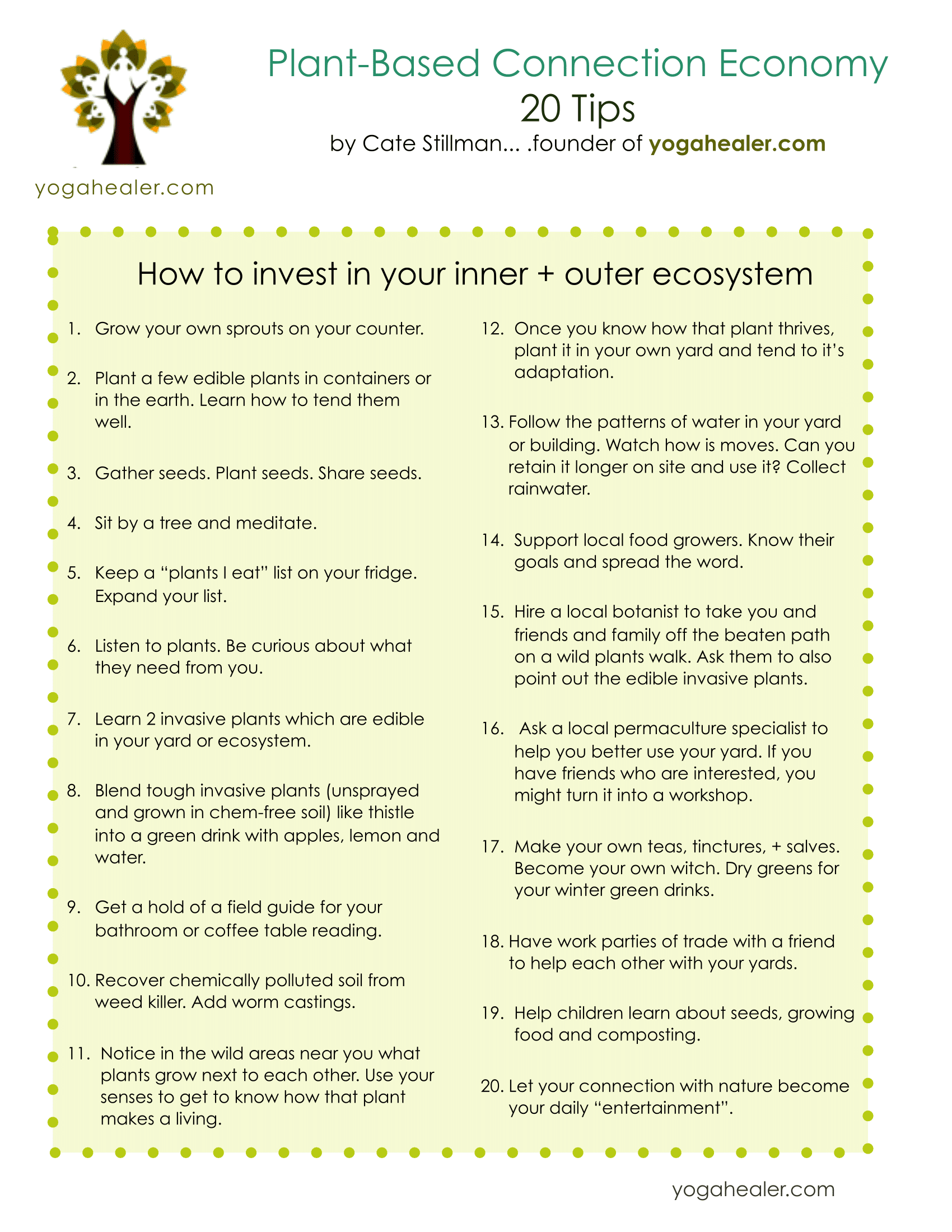
Plant-Based Connection Economy – 20 Tips
Happy Earth Day to all Earthlings.
I first started celebrating Earth Day as a teen – organizing a school-wide event with the predecessor of Whole Foods- a natural grocery store in Massachusetts named Bread & Circus. They worked with SCAT, an eco-awareness group I co-started with my best friend, Jessie Meaney. Jessie’s mom came up with the acronym SCAT for Students Concerned About Tomorrow.
Together, Bread & Circus and SCAT created an amazing 1 day holiday in our school with workshops all day long for students and teachers in get a close look at the unconscious choices we were making… .and how to make more conscious upgrades. When I look back I can’t believe that Jessie and I convinced our headmaster’s boss – the head of the 2 town school system, to give us a day of school with our own curriculum. The power of a good idea! I’ll always be grateful to him for instilling in us budding activists the sense that we could change things- if only for a day.
Fast forward a few decades and I’m still a member of SCAT at heart. I’ve created a little cheat sheet for you to PRINT + PIN to FRIDGE. I recommend circling one or two that are at your growing edge and the next step to you becoming an even more fully-fledged Earthling.
How to Invest in your Inner + Outer Ecosystem
1. Grow your own sprouts on your counter.
2. Plant a few edible plants in containers or in the earth. Learn how to tend them well.
3. Gather seeds. Plant seeds. Share seeds.
4. Sit by a tree and meditate.
5. Keep a “plants I eat” list on your fridge. Expand your list.
6. Listen to plants. Be curious about what they need from you.
7. Learn 2 invasive plants which are edible in your yard or ecosystem.
8. Blend tough invasive plants (unsprayed and grown in chem-free soil) like thistle
into a green drink with apples, lemon and water.
9. Get a hold of a field guide for your bathroom or coffee table reading.
10. Recover chemically polluted soil from weed killer. Add worm castings.
11. Notice in the wild areas near you what plants grow next to each other. Use your senses to get to know how that plant makes a living.
12. Once you know how that plant thrives, plant it in your own yard and tend to it’s adaptation.
13. Follow the patterns of water in your yard.
or building. Watch how is moves. Can you retain it longer on site and use it? Collect rainwater.
14. Support local food growers. Know their goals and spread the word.
15. Hire a local botanist to take you and friends and family off the beaten path on a wild plants walk. Ask them to also point out the edible invasive plants.
16. Ask a local permaculture specialist to help you better use your yard. If you have friends who are interested, you might turn it into a workshop.

17. Make your own teas, tinctures, + salves. Become your own witch. Dry greens for your winter green drinks.
18. Have work parties of trade with a friend to help each other with your yards.
19. Help children learn about seeds, growing food and composting.
20. Let your connection with nature become your daily “entertainment”.
For Cate’s Healthier Kids Workshop: Click Here



